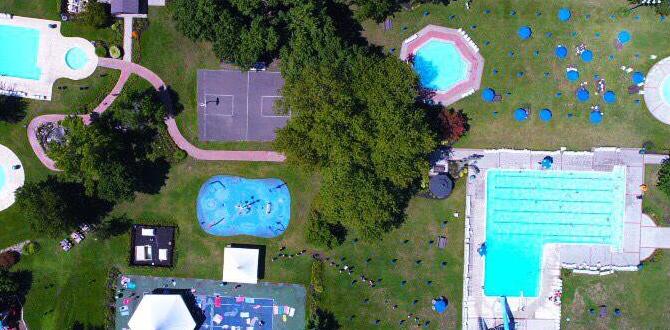Quick Summary
Selecting the right indoor crate for your large dog is key for their comfort and safety. Look for ample space, sturdy construction, good ventilation, and easy cleaning. The best crates offer durability and features that promote a sense of security for your gentle giant while fitting seamlessly into your home.
Indoor Crates for Large Dogs: Essential Selection Guide
Bringing a large dog into your home is a joyous experience, filled with wagging tails and warm companionship. But as any owner of a bigger breed knows, their needs are just as big! One essential item for their well-being and your peace of mind is a proper indoor crate. Finding the perfect one can feel a bit overwhelming, especially with so many options. Many owners worry about their dog feeling cramped, unsafe, or the crate clashing with their home décor. Don’t fret! This guide will walk you through everything you need to know to choose an indoor crate that’s just right for your large furry friend.
We’ll cover how to measure your dog, understand different crate materials, identify crucial features, and even touch on how to make the crate a happy den for your canine companion. By the end, you’ll feel confident in making a choice that benefits both you and your beloved large dog.
Why Your Large Dog Needs a Crate
Crates aren’t about punishment; they’re a valuable tool for training, safety, and providing your dog with a personal sanctuary. For large breeds, a crate offers a secure space where they can relax and feel safe, especially when you can’t directly supervise them. This is crucial for preventing destructive behaviors that can stem from boredom or anxiety. Think of it as their own cozy den, a place where they can retreat from the hustle and bustle of your home.
A properly sized crate aids significantly in house-training by leveraging a dog’s natural instinct to keep their sleeping area clean. It also provides a safe haven during thunderstorms, fireworks, or when visitors are over, reducing stress for your dog. For owners, it means a more controlled environment, making management of a large, energetic animal much simpler. It’s a win-win for everyone involved!
Key Features to Look For in a Large Dog Crate
When shopping for an indoor crate for your large dog, several features are non-negotiable. These elements ensure your dog’s comfort, safety, and the crate’s longevity. Let’s break down what to prioritize.
Size Matters: Ensuring Enough Space
This is paramount. Your dog needs enough room to stand up, turn around comfortably, and lie down in a natural resting position. A common mistake is getting a crate that’s too small, which defeats the purpose of providing a comfortable den. Conversely, a crate that’s too large can hinder effective potty training, as your dog might use one end as a sleeping area and the other as a bathroom.
How to Measure Your Dog for a Crate
Getting the measurements just right is simple with a measuring tape:
- Length: Measure your dog from the tip of their nose to the base of their tail. Add about 4-6 inches to this measurement.
- Height: Measure your dog from the top of their head (or ears, whichever is highest) to the floor. Add about 4-6 inches to this measurement.
This ensures they have ample space to stand, turn, and lie down without feeling confined. For breeds like Great Danes or Irish Wolfhounds, you’ll need to consider the tallest point when they stand on their hind legs if they tend to do that, but for a resting crate, focus on their normal standing and lying position.
Material and Durability
Large dogs can be strong and persistent. The crate material must be robust enough to withstand their presence.
- Wire Crates: These are highly popular for their excellent ventilation and visibility. They are typically made of sturdy steel wire and are easy to assemble and clean. Look for powder-coated finishes that won’t rust or chip easily. Heavy-duty wire gauges are best for larger breeds.
- Plastic Crates: Often called “airline crates,” these are molded from durable plastic. They offer more privacy and can feel more den-like for some dogs. They are also easy to clean and transport. Ensure the plastic is thick and the connecting points are secure. For significant durability, some brands offer reinforced plastic options.
- Wooden Crates/Furniture Crates: These are designed to blend in with home décor, often doubling as end tables or entertainment centers. They offer a more aesthetically pleasing option. However, ensure the wood is sturdy and the interior wire or bars are strong enough for a large dog. Some wooden crates have solid sides which reduce ventilation, so check for ample openings.
For large breeds, it’s especially important that the crate’s doors and locking mechanisms are secure and well-built. You don’t want latches that can be easily nudged open.
Ventilation and Airflow
Good airflow is essential for your dog’s comfort, preventing them from overheating. Wire crates excel in this area. Plastic crates should have ample ventilation slots on multiple sides. If you opt for a wooden or furniture-style crate, check that there are sufficient openings for air to circulate freely. Overheating can cause distress and health problems, so this is a critical consideration, especially if the crate will be in a warmer room.
Ease of Cleaning
Accidents happen, especially during the training phase. A crate that is easy to clean will save you a lot of hassle. Look for crates with removable, washable trays or floors. Smooth surfaces that can be wiped down easily are a big plus. Wire and plastic crates generally win in this category. For wooden crates, ensure any finishes are non-toxic and water-resistant.
Safety Features
Beyond just durability, safety is key.
- Rounded Edges: Ensure there are no sharp edges or points that could injure your dog.
- Secure Latches: Robust and reliable latches prevent accidental escapes and keep your dog safely contained.
- Non-Toxic Materials: Confirm that all materials used in the crate’s construction are safe and non-toxic, especially if your dog is prone to chewing. Websites like the FDA’s Animal and Veterinary Resources offer information on pet product safety that can be generally applied.
Types of Indoor Crates for Large Dogs
Once you understand the essential features, you can explore the different types of crates available. Each has its pros and cons, but one is likely to be the best fit for your home and your dog’s personality.
1. Wire Crates
Wire crates are a classic for a reason. They are versatile, affordable, and provide excellent visibility and airflow.
- Pros: Great visibility, excellent ventilation, easy to clean, collapsible for storage, often come with dividers to adjust size as your puppy grows.
- Cons: Can be noisy if the dog bumps against the wires, may not offer enough den-like security for some dogs, can be less aesthetically pleasing than other options.
Example Sizing (Approximate):
| Breed Type (Examples) | Approximate Crate Size (Length x Width x Height) |
|---|---|
| Labrador Retriever, Standard Poodle, German Shepherd | 42″-48″ x 25″-30″ x 28″-32″ |
| Great Dane, Mastiff, Irish Wolfhound | 48″-54″ x 30″-36″ x 32″-36″ |
Note: Always measure your individual dog and check manufacturer specifications as sizes can vary.
2. Plastic (Kennel/Airline) Crates
These sturdy, often colorful crates are excellent for travel and provide a more enclosed, den-like feel.
- Pros: More secure and den-like, good for travel, less noisy than wire crates, easy to clean, durable.
- Cons: Limited ventilation and visibility, can be bulky and heavier, may not be as aesthetically pleasing as wood.
Choosing a Plastic Crate
When selecting a plastic crate, prioritize models with multiple ventilation windows and secure, heavy-duty latches. Look for brands known for their robust construction, as larger dogs can put more stress on the material. Many plastic crates “click” or “bolt” together, so ensure the assembly is secure and there are no weak points.
3. Wooden Crates / Dog Crate Furniture
These are a popular choice for homeowners who want a crate that doubles as furniture and blends seamlessly into their living space.
- Pros: Aesthetically pleasing, can serve multiple functions (e.g., end table, cabinet), provides a cozy environment.
- Cons: Can be expensive, heavier and less portable, ventilation might be limited compared to wire crates, can be more challenging to clean if not designed well, some large dogs can chew through or break wooden components.
Considerations for Wood Crates
If you opt for a wooden crate, check reviews for durability. Ensure the interior is reinforced with strong metal bars or wire. For chewing breeds, this option might not be ideal unless it’s extremely robust or you’re confident in your dog’s chewing habits. Some high-quality furniture crates use solid wood frames with strong metal components, offering a good balance of style and function.
4. Heavy-Duty Metal Crates
These are often constructed from high-gauge steel or aluminum and are built for extremely strong or destructive dogs. They are less common for standard home use but are excellent for specific needs.
- Pros: Extremely durable, secure, good for escape artists or very strong dogs.
- Cons: Heavy, often expensive, can be less attractive, ventilation might be limited to bars/grates.
For most large dog owners, a heavy-duty wire crate or a robust plastic crate will suffice. Furniture crates are a good option if style is a major concern and your dog is not a destructive chewer.
Setting Up a Welcoming Crate Environment
Once you’ve chosen the perfect crate, making it a welcoming space is the next step. A comfortable, inviting den encourages your dog to view their crate as a positive place, not a confined space.
1. Bedding
Provide comfortable bedding. For large dogs, you’ll need a bed that fits the entire crate floor. Options include:
- Washable Dog Beds: Durable, chew-resistant beds are ideal. Ensure they are appropriately sized for the crate.
- Older Blankets or Towels: A budget-friendly option that can be easily washed.
Avoid bedding that your dog might shred and ingest. If your dog is a strong chewer, start with just a few towels and gradually introduce a bed once they are comfortable and settled.
2. Crate Training Techniques
Introducing the crate positively is crucial. Never use the crate as a punishment. Start with short periods, putting treats and toys inside, and gradually increase the time. The goal is for your dog to willingly go into the crate and feel relaxed there. Resources on positive reinforcement training from organizations like the American Kennel Club (AKC) can offer excellent, science-backed guidance.
3. Placement of the Crate
Where you place the crate matters. Ideally, position it in a common living area, like the living room or family room. This allows your dog to feel like part of the family, even when they’re in their crate. Avoid placing it in a secluded or high-traffic area where they might feel anxious or constantly disturbed. If your dog experiences separation anxiety, a quieter, more private spot might be beneficial initially, but generally, keeping them with the pack is best.
Comparisons: Wire vs. Plastic vs. Wood Crates for Large Dogs
To help you visualize the differences, let’s compare the most common types of crates:
| Feature | Wire Crate | Plastic Crate | Wood/Furniture Crate |
|---|---|---|---|
| Primary Benefit | Ventilation & Visibility | Security & Den-like Feel | Aesthetics & Multi-functionality |
| Durability (Large Dog) | Good (Heavy-gauge recommended) | Very Good | Varies greatly; sturdy construction essential |
| Ventilation | Excellent | Moderate (depends on design) | Fair to Moderate (depends on openings) |
| Ease of Cleaning | Excellent | Excellent | Fair (can be more complex) |
| Portability | Good (collapsible) | Fair (bulky) | Poor (heavy) |
| Cost (Approximate) | $$ | $$ – $$$ | $$$ – $$$$ |
| Best For | General use, potty training, travel, dogs who don’t chew | Travel, dogs who need security, moderate chewers | Owners prioritizing home decor, non-destructive dogs |
When considering a large dog, always lean towards the sturdier end of the spectrum for any crate type. A flimsy crate, regardless of material, can quickly become a safety hazard.
FAQs About Indoor Crates for Large Dogs
Q1: How big should a crate be for a large dog?
Your large dog’s crate should be long enough for them to stand, turn around, and lie down comfortably. Measure your dog from nose to tail base and add 4-6 inches. Measure from the top of their head to the floor and add 4-6 inches. Ensure the crate is not too big, as this can complicate potty training.
Q2: Can a large dog be left in a crate all day?
No, large dogs should not be left in a crate all day. Crates are for temporary confinement, such as during house-training, overnight sleep, or when unsupervised for short periods. Excessive confinement can lead to physical and psychological issues. Dogs need exercise, social interaction, and mental stimulation outside the crate.
Q3: What’s the best material for a large dog’s crate?
For large dogs, durability and strength are key. Heavy-duty wire crates, robust plastic crates, or very sturdy wooden crates with strong metal reinforcements are recommended. Consider your dog’s chewing habits; if they are destructive, wire or plastic will likely be more resilient than wood.
Q4: How do I make a crate a positive place for my large dog?
Introduce the crate gradually with positive reinforcement. Place treats, toys, and a comfortable bed inside. Never use the crate as punishment. Feed meals in the crate and praise your dog for going inside. Start with short durations and gradually increase the time they spend in the crate.
Q5: My large dog seems anxious in their crate. What can I do?
Ensure the crate is appropriately sized and comfortable. Try covering the crate with a blanket to make it more den-like, but leave one side slightly open for airflow. Use calming aids like pheromone diffusers or consult your veterinarian or a professional dog trainer about anxiety management techniques. Never force your dog into the crate; always use positive methods.
Q6: Are furniture crates safe for large dogs?
Some furniture crates are safe and sturdy enough for large dogs, but it depends heavily on their construction. Look for models made with solid wood, reinforced joints, and strong, thick metal bars or mesh. If your large dog is a strong chewer or can exert significant force, ensure the furniture crate is specifically designed for that purpose and has excellent reviews regarding durability.
Q7: How many inches should I add to my dog’s measurements for a crate?
You should add approximately 4 to 6 inches to both your dog’s length (nose to tail base) and height (top of head to floor) when determining the minimum required crate dimensions. This ensures they have sufficient space to stand up, turn around, and lie down naturally.
Conclusion
Choosing the right indoor crate for your large dog is an investment in their happiness, safety, and your harmony at home. By considering their size, prioritizing sturdy construction, ensuring good ventilation, and opting for materials that are both durable and easy to clean, you can find a crate that serves as a secure and comfortable den for your beloved pet. Remember




